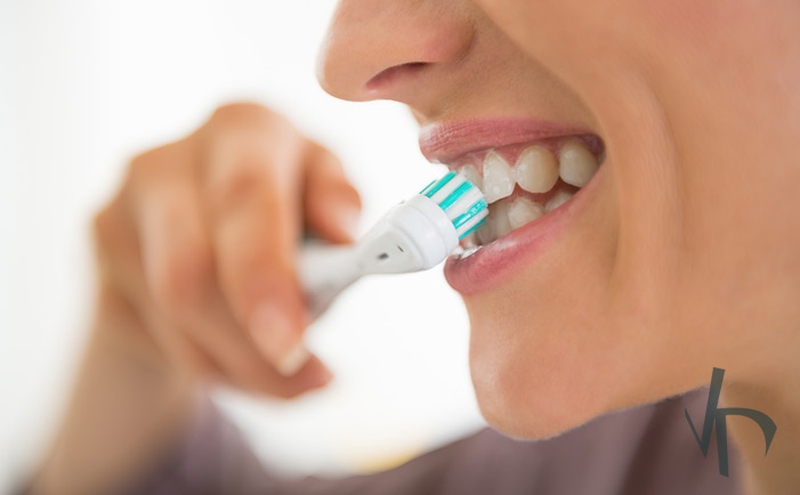Good dental hygiene is essential not only for the aesthetic aspect of having a good smile but also to maintain good dental and general health. Poor dental hygiene can result in gum diseases, infections, loss of teeth ,etc. Flossing and brushing every day and paying regular visits to the dental clinic are mandatory for maintaining good dental hygiene. Avoiding alcohol, tobacco and sugary drinks is also essential for good teeth.

How to Brush Your Teeth Correctly
1. Use a small pea-size amount of toothpaste. You don’t need a large amount of toothpaste to clean your teeth, especially if you are using fluoride toothpaste.
2. Place the brush at a 45 degree angle to the gum line and brush with circular or vertical motions. Avoid brushing across the teeth or brushing them horizontally.
3. Brush your teeth for at least three minutes, spending at least 15 seconds on each tooth. First brush your outside lower left teeth then proceed to your outside lower right, outside upper right and upper left teeth. Then progress to the inside.
4. When brushing the molars, position the brush perpendicular to the teeth and place the bristles of the brush on the molars. Brush using in and out motion moving from the back of the mouth to the front. Repeat the process for the molars on the opposite side of the mouth and on the upper layer of the teeth.
5. Do not forget to brush the insides of the upper and lower front teeth.
6. After you brush your teeth, use the bristles of your brush to brush your tongue. This helps remove bacteria on the tongue and bad breath.
7. Then rinse your mouth with water. It is recommended that you use a small amount of water while rinsing if you are prone to cavities. This helps retain a little fluoride in your mouth which is good for your dental health.
8. After brushing, rinse your toothbrush by placing it under running water to remove the toothpaste and any bacteria. Then leave the toothbrush to dry in a dry place to prevent growth of bacteria.
Now that you are aware of the best techniques on how to brush your teeth, it is important that you regularly brush your teeth twice daily by following the right technique. You can also educate your children on good brushing techniques and good dental hygiene.
Tips for Dental Care for Optimal Health
Choose the right toothbrush
To get the maximum benefit from brushing your teeth you should use the right toothbrush. Choose a tooth brush with soft bristles as hard bristles can erode the enamel of your teeth. The toothbrush should fit well in your hand and the head of the toothbrush should be small enough to move around easily in your mouth. If the head of the toothbrush cannot entirely fit into your mouth then the toothbrush is not the right one for your mouth and you should go for a smaller toothbrush.
Replace the toothbrush regularly
The bristles of your toothbrush can lose their flexibility and change shape over time. It is generally recommended that you replace your toothbrush after every 3 or 4 months. It has been found that after 3 months of use, the bristles of your toothbrush can become sharp because of friction with your teeth. Prolonged use of the same toothbrush for more than three months can cause bleeding in your gums. Moreover, bacteria can also deposit on the bristles on prolonged use.
Choose the right toothpaste
How to brush your teeth? Fluoride toothpastes are commonly used. They help remove plaques and protect the enamel of the teeth. But ingesting a lot of fluoride can have health consequences. Specific toothpastes are also available for various dental problems. There are toothpastes available for cavities, gingivitis, sensitive teeth, tartar, stained teeth ,etc. You can choose the one that works for you or your dentist can recommend one for you.
Floss before you brush
Before brushing your teeth it is recommended that you floss your teeth. Flossing removes plaque, bacteria and food particles from your teeth. A dental floss can reach certain areas in your mouth where a toothbrush cannot reach. Flossing before you brush your teeth ensures that the food particles and bacteria that are dislodged during flossing are not left behind in your mouth.
View All Comments /Add Comment